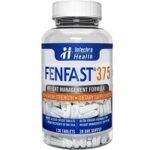Although the U.S. Food and Drug Administration (FDA) and many reputable food manufacturers go to great lengths to help to make certain that the food that you eat and that you serve to your family will be safe, there are still a large number of hazardous chemicals and compounds that can make their way onto your dinner table. Many people find it shocking when they first discover that these dangerous substances are allowed to be in the food that you buy on a regular basis from your supermarket.
The FDA Regularly Adds to its Dangerous Substances Lists
The FDA has announced that it is making efforts to improve our health by banning such unhealthy and dangerous substances such as trans fats, but while these heart disease causing fats are on their way out, a number of chemicals that have received outright bans in other countries are still allowed in food in the United States.
There are many challenges associated with trying to ban dangerous substances from our foods. Among them include waiting for conclusive research to provide guidance regarding a substance’s toxicity levels and discovering which foods contain those substances. After all, there are many harmful natural chemicals in some of our fruits and vegetables that could be very harmful to us, but only if we ate them in extreme quantities that would be impossible for any individual to ingest. As a result, those are not banned.
Others would threaten some of our major food sources if they were to be banned, so the preferred move is to make recommendations regarding maximum consumption. Consider some of the dangerous substances still permitted by the FDA to be present in some of our favorite foods.
Some of the Worst Dangerous Substances Still in Our Foods
Arsenic
Within the last few years the FDA took three feed additives based on arsenic off the market. This substance, a carcinogen that is also known to speed up the growth of livestock, was found to be present in poultry sold in grocery stores during recent tests. However, while those three have been taken away, there is still a fourth kind of additive that is being allowed to remain in use.
Equally, even if animal feed was to have arsenic entirely removed (which has not yet occurred), studies are also showing that rice, products based on rice, seafood, apple juice, and even infant formulas often have detectable levels of arsenic. This is a difficult toxin to avoid. In the case of brown rice, rinsing with water before cooking can decrease its arsenic content by 30 to 40 percent. However, this is not as easy with white rice or products such as apple juice.
Acrylamide
Another carcinogen, this substance occurs naturally when high carb, starchy foods are cooked at temperatures that are higher than 248 degrees. This was discovered only just over a decade ago. To avoid this, you will need to reduce the number of starchy carbs that you consume so that acrylamide won’t be allowed to build up in your foods or your body. Reducing your consumption of processed starches will be very important. Potatoes can have their levels reduced by microwaving them for about 30 seconds before cooking them. This takes the levels down by about 60 percent. Light toasting of bread can also be helpful.
Antibiotics
In the United States, 80 percent of all antibiotics use is in animal feed in order to prevent infection in livestock, regardless of whether or not they require it. Unfortunately, this is resulting in the development of superbugs, which are bacteria that is resistant to antibiotics and, therefore, considerably harder to kill. This places human health at high risk. Buying certified humane meat can help to eliminate the excess antibiotic consumption and other dangerous substances in your diet.
Mercury
Fish is among the healthiest foods you can add to your plate for healthy fats, vitamins, minerals and protein. That said, it also comes with a certain amount of dangerous substances, primarily mercury. Mercury is a toxin. Some fish contain higher levels than others. If ingested in amounts that are high enough, this heavy metal can lead to serious health issues.
Fish and shellfish are exposed to mercury in the water and absorb low concentrations of these dangerous substances, which can concentrate within them over time in the form of methylmercury. Even plants such as algae absorb it to a certain amount.
The amount of mercury in your fish depends on the species and where it spent its life. A study that ran from 1998 through 2005 determined that 27 percent of fish caught from 291 US streams contained mercury levels higher than the recommended limit.
Longer-lived fish such as fresh tuna, swordfish, tilefish from the Gulf of Mexico, shark, marlin and northern pike tend to have higher mercury levels as their bodies have more time in which to accumulate dangerous substances. Larger predatory fish tend to contain more as well because when algae contains it, and small fish contain it but then also eat the algae, then larger fish containing it eat the smaller fish containing, then it builds up more quickly and is not excreted.
Eating large amounts of fish and shellfish can expose you to mercury.
How Much is Too Much?
US government agencies are not about to ban the consumption of fish, so they recommend keeping your levels below 5.0 mcg per liter. That said, a small study of 89 people in the US found mercury levels were at an average of 2.0 to 89.5 mcg per liter. Of those tested, 89 percent had blood mercury levels higher than the maximum recommended amount.
Though you can still eat fish, it’s a good idea to choose your options wisely and eat it only a few times per week as opposed to every day.
Too much mercury can lead to brain and nervous system problems. They can reduce fine motor skills, memory, dexterity, and attention. High levels have also been linked with autism, Alzheimer’s, depression, Parkinson’s and anxiety risks.




















